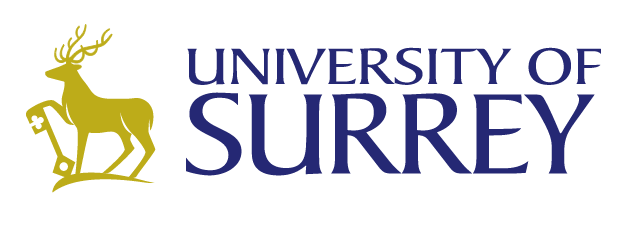EASTERN HIGHLAND OTOMI
- Facts
- Sources of the data
- Orthography
- Verb types
- Verbal inflection
- Inflectional classes
- Stem alternation patterns
Facts
Otomi is a small language family within Oto-Manguean. Eastern Highland Otomi is an Otomi language spoken by about 70,000 people in various communities in the highlands of Eastern Hidalgo, Western Veracruz and Northern Puebla. The variety of Eastern Highland Otomi represented here is spoken in the villages of San Antonio el Grande and San Bartolo, in the municipality of Huehuetla, Hidalgo.
Sources of the data
Voigtlander, Katherine and Artemisa Echegoyen. 1979 [1985]. Luces contemporáneas del otomí: Gramática del otomí de la sierra. Mexico: Instituto Lingüístico de Verano.
Voigtlander, Katherine and Artemisa Echegoyen. 2007. Gramática del yuhú: Otomí de la Sierra Madre Oriental. Mexico: Instituto Lingüístico de Verano. Ms.
Echegoyen, Artemisa and Katherine Voigtlander. 2007. Diccionario yuhú (Otomí de la Sierra Madre Oriental): Estados de Hidalgo, Puebla y Veracruz, México. Mexico: Instituto Lingüístico de Verano.
Orthography
| IPA notation |
Source notation |
Our notation |
|---|---|---|
| NASALITY | ¨ (diaeresis) | – |
| ɨ | ʉ | – |
| ɘ | ø | – |
| ɛ | ẹ (dot below) | – |
| EJECTIVE | ’ | – |
| ʔ | ’ | ʔ |
| ʃ | x | – |
| tʃ | tx | – |
| pʰ | f | – |
| kʰ | j | – |
| j | y | – |
| ɲ | ñ | – |
Tones
We have changed the tone marking of lexical stems from diacritics to superscript numerals for clarity and to aid with future analysis. However, since tone on clitics is lexical (and thus invariable) we have left tone marking on clitics untouched.
| Stems | Clitics | |||||
|---|---|---|---|---|---|---|
| Low | 1 | ma¹di | ‘take care’ | __ | ga | 2.IRR |
| High | 2 | nde² | ‘want’ | ´ | gá | 2.CPL |
| Low > High |
12 | mu¹² | ‘gather’ |
Verb types
Verbs in Eastern Otomi can be basic, derived (denominal or denumeral) or old compounds. Basic verbs commonly consist of a monosyllabic root and a stem formative, but there are also many which are obscure compounds, and some entries in the dictionary involve stems which carry additional morphemes. In the database, we have indicated this where possible.
NOTE: Verbal entries may also appear with a nasal clitic (at times infixed) which conveys middle voice (used for typical reflexive and reciprocal situations).
Verbal inflection
Like a typical Otomi language, verbs in Eastern Highland Otomi inflect for TAM values and for person of the subject by means of a series of clitic words that precede the verbal stem. Examples for the 1st person of the verb joni ‘gather’, are presented below. In the source materials, the ‘incompletive’ subparadigm is commonly treated as ‘present’, the ‘completive’ as ‘past’, and the ‘irrealis’ as ‘future’.
Note: For practical purposes, in the database we treat such formatives as if they functioned like affixes.
| 1st person |
||
|---|---|---|
| ‘gather’ | ||
| Incompletive | dí | joni |
| Imperfect | dmí | joni |
| Completive | dá | joni |
| Perfect | xtá | joni |
| Pluperfect | xtá | joni |
| Irrealis | ga | joni |
Inflectional classes
Verbs fall into five different inflectional classes attending to the clitic series they select. Echegoyen and Voigtlander (2007) follow the principles of the classification in Voigtlander and Echegoyen (1979), and they propose seven classes. In our analysis, we propose that middle marked verbs (with a pre-thematic n in all forms) do not form separate inflectional classes.
| Echegoyen and Voigtlander's classification |
Our classification |
|---|---|
| 1.a | I.a |
| 2.a | I.b |
| 1.b & 2.b (middle verbs with n=) | II |
| 3.a & 4 (middle verbs with n=) | III |
| 3.b | IV |
Example paradigms for each class are given below:
| Class I.a | Class I.b | Class II | Class III | Class IV | |||||||||||
|---|---|---|---|---|---|---|---|---|---|---|---|---|---|---|---|
| ‘gather’ | ‘save’ | ‘walk’ | ‘fix’ | ‘hurry’ | |||||||||||
| Incompletive | 1st | dí | joni | dí | -n | yäni | dí | ’yo | dí | -dí | hoki | dí | -dí | xøni | |
| 2nd | gí | joni | gí | -n | yäni | gí | ’yo | gí | -dí | hoki | gí | -dí | xøni | ||
| 3rd | (i) | joni | i | -n | yäni | (i) | ’yo | (i) | -di | hoki | (i) | -di | xøni | ||
| Imperfect | 1st | dmí | joni | dmí | -n | yäni | dmí | ’yo | dmí | -dí | hoki | dmí | -dí | xøni | |
| 2nd | gmí | joni | gmí | -n | yäni | gmí | ’yo | gmí | -dí | hoki | gmí | -dí | xøni | ||
| 3rd | mí | joni | mí | -n | yäni | mí | ’yo | mí | -dí | hoki | mí | -dí | xøni | ||
| Completive | 1st | dá | joni | dá | yäni | dá | -n | ’yo | dá | hoki | dá | -n | xøni | ||
| 2nd | gá | joni | gá | yäni | gá | -n | ’yo | gá | hoki | gá | -n | xøni | |||
| 3rd | bi | goni | bi | yäni | bi | -n | ’yo | bi | hoki | bi | -n | xøni | |||
| Perfect | 1st | xtá | joni | xtá | yäni | xtá | -n | ’yo | xtá | hoki | xtá | -n | xøni | ||
| 2nd | xká | joni | xká | yäni | xká | -n | ’yo | xká | hoki | xká | -n | xøni | |||
| 3rd | xø-n | goni | xø | -n | yäni | xø | -n | ’yo | xø | hoki | xø | -n | xøni | ||
| Pluperfect | 1st | xtá | joni | xtá | yäni | xtá | -n | ’yo | xtá | hoki | xtá | -n | xøni | ||
| 2nd | xkí | joni | xkí | yäni | xkí | -n | ’yo | xkí | hoki | xkí | -n | xøni | |||
| 3rd | xí | goni | xí | yäni | xí | -n | ’yo | xí | hoki | xí | -n | xøni | |||
| Irrealis | 1st | ga | joni | ga | -n | yäni | da | -n | ’yo | ga | hoki | da | -n | xøni | |
| 2nd | gi | joni | gi | -n | yäni | ga | -n | ’yo | gi | hoki | ga | -n | xøni | ||
| 3rd | da | goni | da | yäni | di | -n | ’yo | di | hoki | di | -n | xøni | |||
Stem alternation patterns
Many verbs of Class I.a display some sort of stem alternation pattern. Verbs which do not we treat as Type 1, while those that do can be seen as belonging to three types.
Type 2 verbs
Type 2 verbs select a secondary stem for the 3rd person in all aspect-moods except the incompletive and the imperfect, e.g. joni ‘gather’. The database lists all secondary stems for verbs that have them.
| 1st | 2nd | 3rd | ||||
|---|---|---|---|---|---|---|
| Incompletive | dí | joni | gí | joni | joni | |
| Imperfect | ndí | joni | ngí | joni | mí | joni |
| Completive | dá | joni | gá | joni | bi | goni |
| Perfect | stá | joni | xká | joni | xa | goni |
| Pluperfect | stí | joni | xkí | joni | xki | goni |
| Irrealis | ga | joni | gi | joni | da | goni |
Type 3 verbs
Type 3 verbs all have a glottal onset /h, ʔ/ and select the secondary stem for the 2nd person and the 3rd person in all aspect-moods except the incompletive and the imperfect, e.g. hëʔmi ‘look down’.
| 1st | 2nd | 3rd | ||||
|---|---|---|---|---|---|---|
| Incompletive | dí | hëʔmi | gí | hëʔmi | hëʔmi | |
| Imperfect | ndí | hëʔmi | ngí | hëʔmi | mí | hëʔmi |
| Completive | dá | hëʔmi | gá | hyëʔmi | bi | hyëʔmi |
| Perfect | stá | hëʔmi | xká | hyëʔmi | xa | hyëʔmi |
| Pluperfect | stí | hëʔmi | xkí | hyëʔmi | xki | hyëʔmi |
| Irrealis | ga | hëʔmi | gi | hyëʔmi | da | hyëʔmi |
Type 4 verbs
There is only one verb instantiating this type. It is the verb pa ‘go’. This verb selects the secondary stem for all persons, in all aspect-moods except the incompletive and the imperfect.
| 1st | 2nd | 3rd | ||||
|---|---|---|---|---|---|---|
| Incompletive | dí | pa | gí | pa | pa | |
| Imperfect | ndí | pa | ngí | pa | mí | pa |
| Completive | dá | ma | gá | ma | bi | ma |
| Perfect | stá | ma | xká | ma | xa | ma |
| Pluperfect | stí | ma | xkí | ma | xki | ma |
| Irrealis | ga | ma | gi | ma | da | ma |






